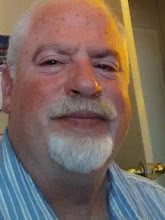ANXIETY OPTIONS:
WHEN EXPERIENCING ANXIETY YOU MAY HAVE
SEVERAL ALTERNATIVES FOR DEALING WITH IT.
Jack Bragen
Chronic anxiety is very common for people who have a mental health diagnosis. Yet, numerous people who qualify as “normal,” who have jobs and who do not have a major mental disorder, nevertheless have chronic anxiety and take Klonopin or something in the same class of drugs. The class is that of Benzodiazepines.
Numerous people who have a mental health diagnosis, and some who are without one, are prescribed Clonazepam (also known by its trade name: Klonopin). This is an anti-anxiety medication and also a controlled substance. It is helpful to people who have too much anxiety and when this anxiety apparently isn’t responsive to cognitive techniques. In some instances, I am sure that the doctor will automatically prescribe an anti anxiety agent without bothering to explore other avenues of relief. However, Clonazepam has some drawbacks.
The body adjusts to a given dosage of Clonazepam, so it is necessary to periodically increase the dosage to get the same effect. I have seen that Clonazepam, when taken in a substantial quantity, can make someone appear zombie-like. In addition to providing a respite from anxiety, this medication is also very sedating. This means a person may not be able to function well, in life, if taking Clonazepam too often.
Clonazepam is primarily useful for short-term relief of anxiety. When the anxiety is excessive and constant, the consumer of it will probably ask for continually greater dosages. In cases like these, Clonazepam might not be the solution. One option is meditation, in which the consumer learns techniques of mindfulness to ease the anxiety. Another option is to take a “beta blocker,” (such as Inderal) which is a non addictive class of medications that will simply block anxiety across the board. Beta blockers such as Inderal are also used to treat high blood pressure.
However, some doctors will simply prescribe benzodiazepines without a lot of deliberation.
Medicating a person excessively sometimes puts them at risk for “Serotonin Syndrome,” a severe and possibly life threatening medical condition caused by consuming excessive dosages of several types of medication at once.
I can not safely say that mindfulness can be used for all people’s anxiety. However, a meditative “patch” to consciousness can sometimes be used in place of anti-anxiety medication. In order for this to happen, it is necessary to have what I would call “complaint resolution” in your consciousness, and this process can be installed to run on automatic.
In order to achieve a resolution to internal complaints, it is necessary to find the mental area in which worrisome complaints enter into consciousness to create the worry. You must then have the ability to dismiss most worries without the need for a lot of internal arguing. You may sometimes have to dismiss worries without knowing exactly what is being worried about.
The good news is that if you spend considerable time and energy deliberately dismissing specific worries, your subconscious will naturally begin to do this on automatic. It is the good habit of pinpointing and negating thoughts which would otherwise build up to create a bad mood, and/or anxiety attack. The bad news is that many people can not “see” within themselves well enough to use this method.
“Dismissing” a specific worry is another skill that improves with practice. You do not need to have the worrisome emotion in order to deal with the thing that you are worried about. This means that you are still free to solve problems in your life, even when they do not cause you to be fearful. Dismissing a worry means that you are telling your brain not to generate worry or fear over a specific issue. It starts with some form of pinpointing of the worry so that your brain can identify what it is being told not to do. A vague command given to the brain, or a generalized command, often does not have much effect, or else it can result in unhealthy suppression of your actual feelings.
Use of the internal sense is a mental power that becomes stronger with use. First attempts at looking within may not yield much result. Antipsychotic medications, which I take in addition to other medications, can act as a block to the internal sense. This is because they work partly through emphasizing the external environment. This blocking of the internal sense can be offset with practice. This reinstatement of the internal sense through mindfulness doesn’t interfere with the usefulness of antipsychotic medication.
There is a final option to dealing with anxiety that I haven’t covered yet: Just tolerate it and wait for it to go away. This is what you would call the “low tech” or old fashioned solution to being anxious.
Sunday, January 15, 2012
Subscribe to:
Post Comments (Atom)

No comments:
Post a Comment